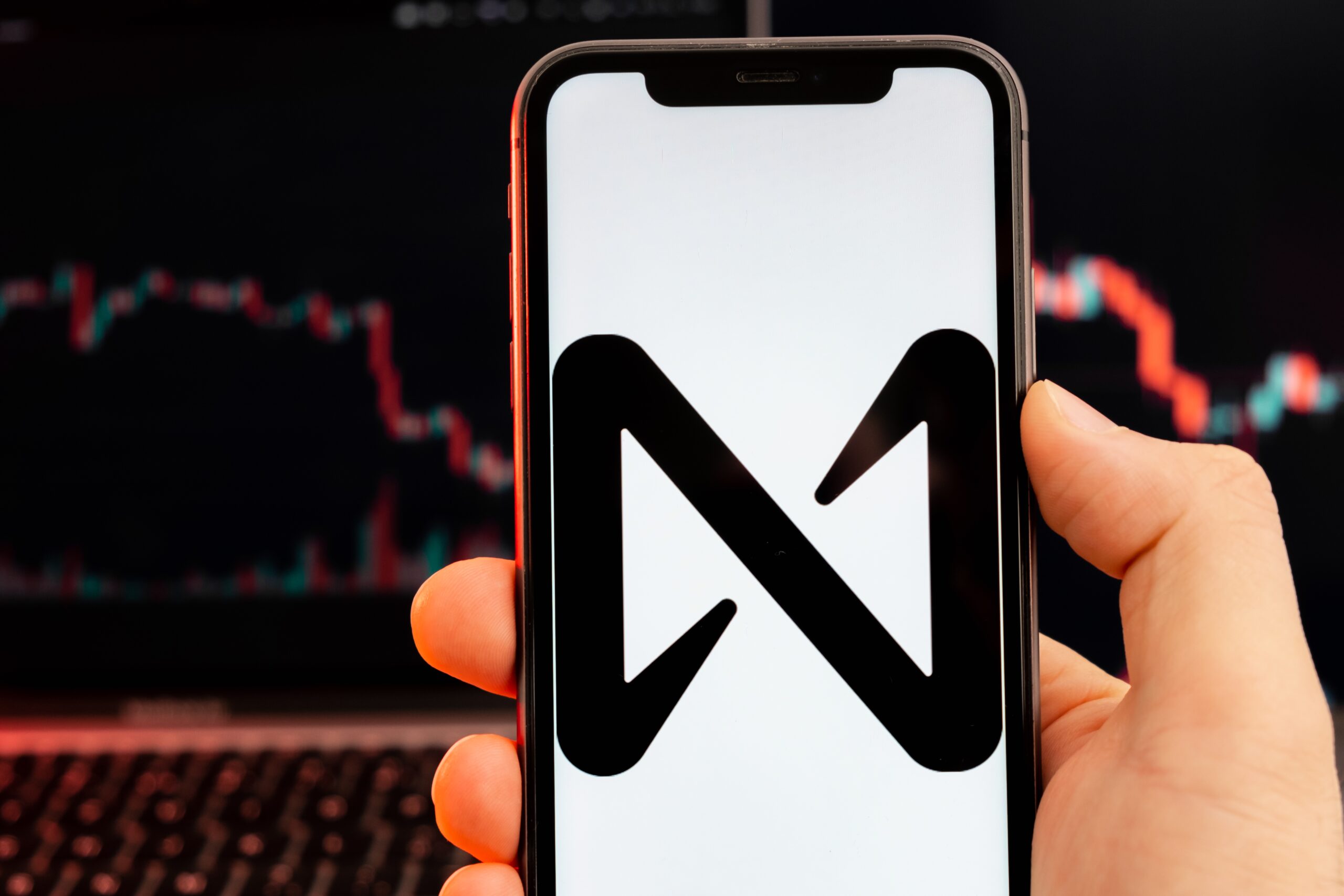NEAR Protocol Raise Drives Price Higher | Navigator
Review Date: January 14, 2022
The NEAR Foundation recently announced they closed a $150 million funding round led by pivotal crypto VCs, including Su Zhu’s Three Arrows Capital (3AC), Alameda Research, Andreesen Horowitz, and Dragonfly Capital.
This investment strengthens an already liquid ecosystem fund. In October, the NEAR Foundation announced that their fund contained $800 million with $350 million of capital to be deployed to DeFi projects on the chain. The recent raise will provide additional funding to DeFi development within the ecosystem.
News of the raise sent the NEAR token to an all-time high of nearly $20 the day the news went public, its market cap briefly surpassed $12 billion.
NEAR is a Token Metrics favorite. It’s a layer-1 blockchain with an emerging ecosystem of associated dApps. Token Metrics scored NEAR highly months ago, and news of this investment round increases our bullishness.
NEAR is a sharded scalable blockchain, the goal of the long-awaited and often-delayed Ethereum 2.0 upgrade. Each shard can process 10 times more transactions than Ethereum 1.0, and the team plans to build 100 shards over time. With the release of the Aurora platform on NEAR, which lets the chain have EVM capabilities, developers can effectively build and scale applications on NEAR using the Solidity programming language.
Two years after launch, NEAR and Ethereum had nearly the same number of active monthly developers. NEAR’s developers focus heavily on developer usability, and thus far it seems to be an effective strategy. This ecosystem is already growing well.
Bottom line: VCs are delivering a big vote of confidence here, and an ecosystem of user-friendly dApps, particularly in the DeFi sector, can make NEAR a major player in the layer-1 space, possibly challenging Ethereum’s dominance.
The Fed’s Hawkish Stance: What Crypto Investors Should Know
The Fed released the minutes from their December meeting this month. Hawkish language in the notes sent equities, crypto, and bonds markets into a selling frenzy. News of hawkish language from the Fed means investors can expect a hike in interest rates.
US Consumer Price Index statistics came out on January 12th, and with CPI increasing 7% since last December, rate hikes look increasingly probable. Inflation hasn’t reached this level since 1982.
The meeting minutes suggest we could see as many as four interest rate hikes next year, with most experts expecting at least three. Increasing inflation continues to be a concern for economies across the globe, and the Fed will have to battle this issue just as the European Central Bank does.
The question is: what do interest rate hikes and the cessation of money printing look like for crypto?
Starting with the latter, the Fed added $120 billion a month to the economy by purchasing government bonds during the pandemic. Once the Fed begins quantitative tightening (QT), they could subtract as much as $80 billion a month from the economy. That’s a difference of $200 billion per month.
As a risk asset, crypto benefited from additional money coming into the system because investors had excess liquidity to finance riskier investments. Once money starts leaving the system, investors tend to flee to safer investments like bonds and value stocks.
Crypto will suffer from QT just as it benefited from QE.
With inflation at 7%, no rational person wants to buy bonds yielding 1.8%. Inflation has forced the hand of the Fed to hike rates in 2022. Just the news of these hikes dropped the price of Bitcoin by nearly 10% and negatively affected the equities market.
The saving grace for crypto could be its correlation to equities. With midterm elections coming this year, a stock market crash would not be good for incumbents. An equities crash before a recession could mean that the Fed is just talking tough and be as hawkish as their minutes indicate.
Bottom line: Decreasing the money supply will hurt the crypto market, but the damage will not be irreversible. The money printing done by the Fed during the pandemic forced retail and institutional investors into crypto for the long run.
What’s The Difference Between Web 1, 2, and 3?
For all the talk of Web 3 lately, it’s got some people wondering what the heck Web 2 was. And was there even a Web 1, for that matter? Let’s get into it below. These distinctions are about nothing less than the evolution and maturation of the modern internet, so it’s worth paying attention to if you’re not already.
Let’s first step back in time to the late 1990s. Remember when email was amazing? Remember when the scratchy sounds of your dialup modem actually sounded like music? Congratulations, you remember the heyday of Web 1 (although no one actually called it that back then).
This era marked the popular conception of this idea of “internet,” the ability to transmit data around the world nearly instantaneously. We’re calling it Web 1 because it was the first mainstream version of this idea. America Online in its heyday, that’s a prime example of Web 1. Sending and receiving information without any concern for how far that information had to travel around the world.
We can mostly trace the origin of Web 2 to the proliferation of social media, starting in approximately the mid-2000s. Where Web 1 was about simple data transmission and receiving, Web 2 marked the democratization of tools necessary to share media and build an audience. In the Web 2 era, you no longer had to be the New York Times in order to get a story out, you just had to click “publish” on your blog. You no longer needed to put party invitations in the mail, you just needed to create a Facebook event and invite all your friends. You no longer needed to have artwork on display in a museum, you just needed a DeviantArt account to share your work with the world. Web 2! The advent of social media!
Now everyone’s talking about this thing called “Web 3.” We might also call it “the decentralized web,” as the major theme at play here is decentralization. If you have any crypto familiarity at all, that topic is probably quite familiar to you. The broad strokes: no single entity holds all the power in a system. Whether that system is a bank, a gaming platform, data storage, web hosting, or anything at all, Web 3 systems call for individual entities acting in concert in order to maintain the functionality of that system. Bitcoin is a strong example of a Web 3 application — consider how Kazakhstan once held the second-highest hashrate for mining BTC before a national power emergency effectively took every Kazakh miner off at once. The global mining network simply carried right along. What would have been a disaster for a centralized system was no more than a speedbump for this decentralized one.
Web 3 is partially about reclaiming power from large conglomerates that amassed so much of it in the era of Web 2. We’re talking about entities with names like Facebook and Google and Amazon — where they used to have a monopoly on digital connection and transaction, Web 3 applications decentralize this clout and restore it to the users.
Consider how an Amazon Web Services outage today can trigger major errors across sites like Twitter, Facebook, IMDB, and more — it’s happened in the past, and until we see a decentralized response to AWS, it’s bound to happen again. But a response to AWS running on Web 3 principles would be far more resilient. Smaller entities (maybe even individuals) would be the ones maintaining the network, and they’d be highly incentivized to keep it running smoothly.
The bottom line: Web 3 is about bringing crypto methodology to the everyday internet, especially as it pertains to decentralization and digital ownership.
True Confessions Of A KuCoin Trader
Let’s be real: it was a great week to be holding FTM and NEAR.
I am interpreting the positive price action here as a small endorsement of my previously described “low frequency, high conviction” trading approach for 2022. I remain long as hell on both of these positions and could imagine buying more, even at these newly increased prices.
I am less enthusiastic in this moment about my CRV and POLY positions. I got to hold CRV through a minor pop shortly after buying it, but I have since ridden that down some 30%. It seems to be coming back slowly. I could conceivably buy more to reduce my overall cost basis, but let’s be real — I’m a retail investor, not some nine-figure institution. I’m waiting for my next paycheck before actually putting any mental energy into questions of how to approach CRV, if at all. Besides, there are some exciting other cryptos out there, plenty of fish in the sea for me to spend my hard-earned cash on.
Then we get to Polymath’s POLY token, and I mostly understand that I need to do some more research here. Holding POLY, which is a conventionally tradeable and liquid cryptocurrency, you gain the ability to exchange it at a 1:1 ratio for POLYX, the native token of Polymesh, which is the same team’s purpose-built project aimed at being a kind of silver bullet for fully compliant security tokens. But right now, POLYX is not at all tradeable or liquid. I guess I’m worried about the security token narrative not taking off, I guess I’m worried about the (admittedly low) technical bar for bridging one coin for the other. It doesn’t help that price-performance here has been utterly unremarkable.
One day at a time, one thing at a time.
Until then, you may imagine me stacking singles and pocket change, saving up to tokenize the next batch of cash. I don’t know what I’ll be buying yet, but rest assured I have a few ideas.
Anyway, it’s got so much more to do with when you buy as opposed to what you buy.
TM Grade Performance
The TM Grade was able to identify momentum plays that played out well over the past week. In fact, the table below shows a few examples of top-rated coins on Friday, January 7th, and how they performed up to today, Friday, January 14th.
| Token Name | TM Grade as of 7th | ROI |
| Paint Swap | 87 | + 87% |
| ION | 92 | + 79% |
| Chrono.Tech | 90 | + 70% |
| Scream | 86 | + 65% |
| Octopus Network | 90 | + 32% |




